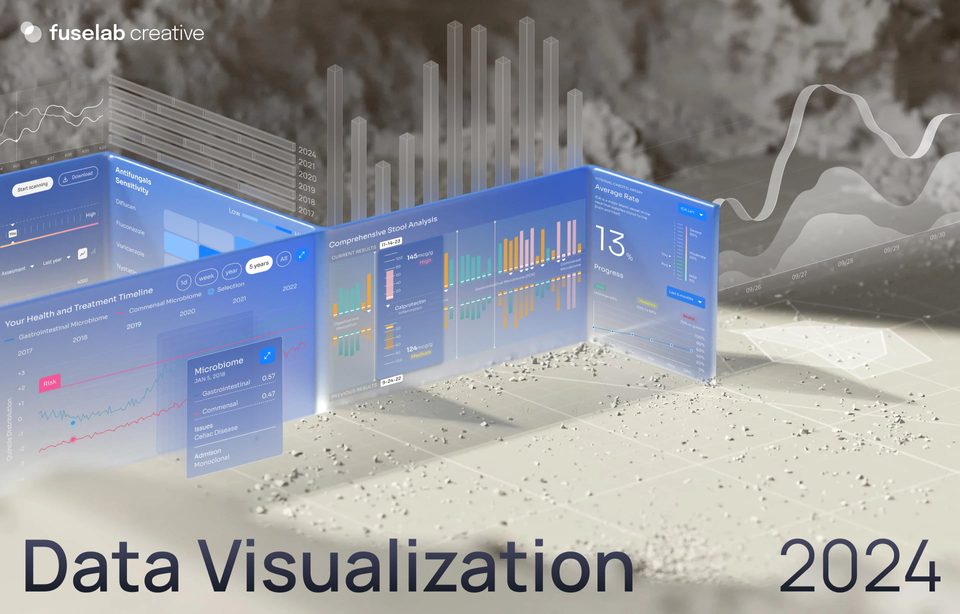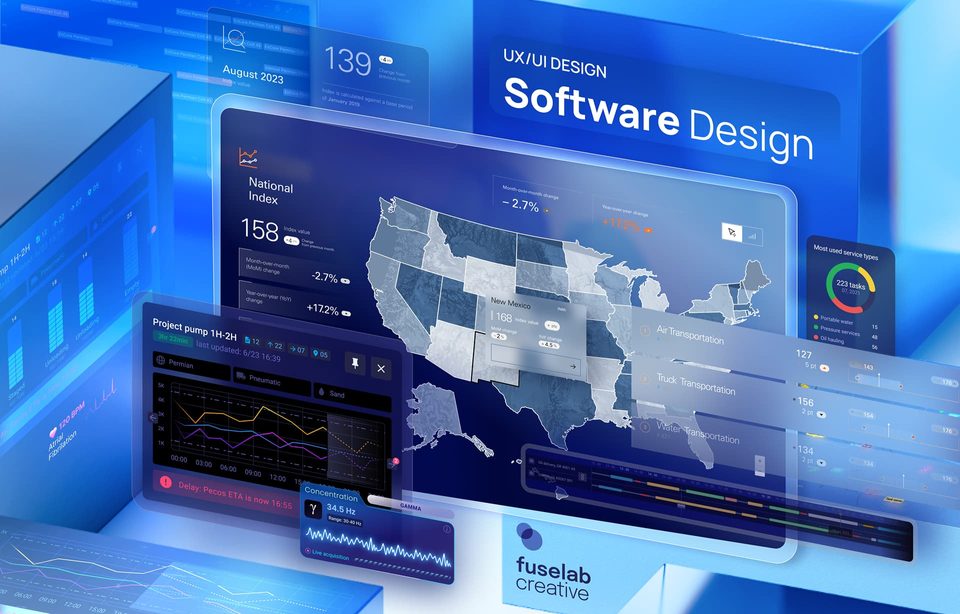Mobile App Design Trends 2023

As technology advances every year, new mobile application design trends emerge based on industry demands. In the past few years, we have seen a major shift in the way users interact with digital platforms, the time they spend on them, and the level of engagement they offer to every platform they use. Understandably, these new behavioral changes shape new preferences and 2023 is shaping up to be no different.
But before we dive into the latest mobile app design trends, let’s understand why following these trends is important for your business and what would happen if you stick to what you already know.
Three reasons why you need to follow the latest app design trends
User convenience and experience
Every user has a certain objective when they download an app. Whether or not they continue to engage with it after trying it out once depends on how good their initial experience is. Designing an app around user trends, behavior, expectations, and preferences allows you to create intuitive interfaces that align with what people expect from your brand.
Simply put, building your app around user expectations is a great way to ensure that your app does not get tossed away into the uninstalled folder.
For instance, users are increasingly switching to dark modes. Blame the visual fatigue as a result of constant exposure to screens, but you can’t ignore the importance of dark mode in any app. Roughly 82% of people who use smartphones use dark mode. So, if your app does not cater to this convenience, there is a high probability that your app will start to decline in new users and lose some of your existing users.
Brand relevance and consistency
In the US mobile users are spending 88% of their total mobile time on apps versus using a browser. This shows that there is a high demand for apps across the country, and the numbers are probably not that much different in other countries as well. But there are millions of apps in the world and only a few dominate the space. And there is a reason for that!
Most apps either don’t bridge the problem-solution gap or simply aren’t needed, or they just simply suck. Some apps also don’t offer the same level of convenience or ease of use as their website counterparts because of their overall complexity and the inability to translate to the mobile environment. So, it is crucial to plan the design of your apps based on what your brand stands for as well as its use case. Without relevance, uniformity, or consistent performance, your app is bound to fail in 2023.
Check out our work on the Notify mobile app design that we designed to serve as a coherent unit for the brand’s overall online presence, while still delivering functional simplicity.
Future-proofing digital assets
Trends are emerging faster than the speed of light. This is not an exaggeration but a reality in many industries. Based on the industry you are operating in, not following the latest app design trends could make your digital asset obsolete quicker than the speed at which the same trends die.
For example, apps that incorporated voice searches right from the beginning are enjoying great engagement in the era of Siri and Alexa. UI/UX consulting services that had the foresight and quickly incorporated this functional element are gaining popularity for their convenience. Brands that embraced voice search have been able to stay relevant while the technology went from 0 to 60 in just a few years.
Mobile app UI/UX design trends
For the last few years, we have seen design trends around familiarity with gestures and motions, conversational design, animated walkthroughs, tutorials, and purposeful designs made for specific industries (ex. travel mobile app design for a travel business or eCommerce apps for an online store), and soothing typography built using the latest app design font trends.
We have also seen apps built using elements with soft and curved edges, strong imagery for ease of visualization, and layers for dynamic visualization. But it does not stop there. Here are some new mobile app design trends for 2023 that deserve your attention.
Funky and quirky aesthetics
The average smartphone user uses 30 apps in a month. With so much saturation in the app industry, it is unrealistic to expect users to remember an app that does not cater to their pain points or fulfill particular needs.
As unfortunate as it may be, users don’t use apps with positive illusion, wherein they allow the pros of the app to be the determining factors of their future engagement with it. Instead, they find reasons to say no to the app for reasons ranging from saving space in their smartphone’s memory to cutting down on their screen time.
For this reason, apps that boast of an out-of-the-box and eccentric aesthetic app design fare well against those that blend into the background. An 80s-style UI has been making waves and has been gaining popularity in 2021 and it is probably going to be one of the leading mobile app design trends in 2023, as well.
Emojis wherever possible
Digital communication today is impossible without emojis. Since apps are one of the primary digital assets for any brand, integrating them into your app can provide users with an enhanced visual experience. The familiarity and playfulness that accompanies emojis can make your app more relatable, relevant, and engaging – thereby adding to the overall user experience.
A prime example of this is WhatsApp, which has successfully transformed conversations into being more fun and expressive with its treasure chest of emojis.
Monument Valley, for example, is a mobile game app that has hooked its users using Escher-inspired landscapes. The puzzles have a very modern feel and aesthetic, which have successfully created an impact on the users through a unique and immersive experience.
Provocative and eye-catching copy
Sometimes we forget how important good messaging can be, and end up falling in love with some kind of animation that grows stale by the second use. The purpose of every app is not only to generate engagement but to also evoke a certain emotion in the user. Strong and targeted copy has the power to do just that when it is planned strategically.
You can use bold statements and words to capture the users’ attention, highlight a feature, or induce curiosity. In fact, with the right combination of copy and typography, Calm, a meditation app, has been able to garner the attention and engagement of over four million people across the world.
Using statements like “Find Your Calm” and “Start Your Journey to Mindfulness,” the app has been able to strike an emotional connection with its users in just a few years.
Animated everything
Micro-interactions have become the nerve of apps. As digitization becomes more accessible and advanced, animating each element built within the app has gradually picked up as a trend.
From making an element pop with subtle animation to making transitions more seamless and interactive, animation has changed our expectations from mobile apps. And this trend is only set to grow more as we struggle with our shrinking attention spans.
For instance, people find it very difficult to wait for a page to load. Anything that takes more than three seconds gets abandoned. Micro-interactions keep the user’s attention fixated on the screen by using tiny animated visuals (ex. the little loading page circle animation).
Some apps also use confetti or reward pop-ups to congratulate users for completing a task. This acts as an incentive and motivates users to continue engaging with the app as much as possible.
To see micro-interactions in action, check out the Bearn Health mobile app design that we created for one of our enterprise clients.
Vibrant color scheme trends in mobile app design
One thing that all mobile app design agencies can agree on is the rise in vibrant color schemes. There was a time when subdued color palettes were ruling the mobile app design trends but 2023 is the era of bold and eye-catching hues. Nothing is muted and every brand’s purpose is to establish a distinctive brand identity for itself in the market.
Take Instagram for example. The bold use of pink creates a vibrant energy around the app and has evolved to be one of the most popular color trends in app design. The gradients allow users to derive visually-aesthetic pleasure from the logos, interface, and animations. There’s no surprise why it is one of the only apps in the world with a 2.5+ billion user base.
Operating System specific design
Nobody likes to use a glitchy app or even an app that wasn’t designed for them specifically. One of the mobile app UI design trends for 2023 is building apps for different operating systems. This is exactly like building websites with a mobile-first approach to cater to the 50% smartphone user traffic.
For the users, having an OS-specific design means consistency in their user experience, familiarity with the gestures, and an optimized performance tailormade for their device. This is important because iOS app design trends are different from Android app design trends due to their core programming differences.
Mobile design for Common Voice Mozilla by Fuselab Creative

Security and password accommodations
With Europe’s GDPR taking the front stage, every UI/UX design agency around the world is putting more focus on improving the privacy settings of their apps. And rightly so, because businesses stand to lose a ton of money and engagement if their users don’t feel that their data is safe on the platforms they use.
Facebook losing billions of dollars in revenue is proof that not even the once most popular social media platform is immune to boycotting as a result of security concerns. For this reason, having a secure entry and authentication process is one of the most crucial current trends in mobile app design.
Businesses can create their own secure gateway or partner with cyber security management systems to integrate data management and security into their apps.
An in-app algorithmic approach for user data
Data is the future and building algorithms around data is easily one of the most popular new trends in mobile app design. Businesses that invested in data management systems and implemented AI in their apps a few years ago now have become some of the biggest names in the world. Those that operated on the basis of data are now enjoying a competitive edge in their respective markets.
The reason is simple: leveraging user data allows you to deliver tailored content, recommendations, and personalized interfaces. This, in turn, leads to higher engagement and more relevant experiences for the users every time they use your app.
As a result of a positive experience, you successfully build a loop of give and take with your audience, which allows them to stay loyal to you for the long term. This can be a very useful approach for healthcare app design where patient data is the most important determinant for future treatment plans.
Hopefully, we have provided some kernels of insight to help you generate apps that are loved by everyone. Get in touch with our app design experts to know more.
Designing an app is not very difficult anymore, but designing an app that’s relevant, useful, and delivers high performance is no small achievement. For some additional information on our approach to app design and development check out our mobile app design service.

Responsive is good, but adaptive is better, let us explain why.
Most companies with websites have probably heard of responsive design for mobile devices. However, this is often far from effective use of your time and money. Whereas, adaptive design addresses the most critical issue with mobile environments: usability.
Browse more

Data Visualization Trends 2024
